
Wilcox semi-automatic telegraph key. Photo: ZL1NZ
This very shiny nickel-plated key was made by Fred A Wilcox in Toronto, probably in the 1920s or 1930s, and it has been in my collection since the early 1970s.
Here is some information I have gleaned about the Wilcox keys:
“In Morsum Magnificat No. 3, Don deNeuf mentions an old Vibroplex with long legs that can be operated upside down. Well, there was an old telegraph operator, Fred A Wilcox, who was with the Canadian National Telegraph for many years. Fred had a machine shop at home and made a number of bugs which he sold to his telegraph friends during the 1920s.
“Fred did not have a full set of fixtures and as a result his bugs did differ in detail, although the design was basically that of Horace Martin’s Vibroplex. Some of them had nickel-plated brass bases, while others had steel bases. Fred wanted to make sure they didn’t slide around while being operated, so they all had very heavy bases.
“Al Graham was also an operator with the Canadian National Telegraph Company, and was using a Wilcox bug. He suffered a stroke and was unable to use his right arm. So Fred Wilcox took Al’s bug, turned it upside down and mounted all the hardware on the bottom, thus converting it into a left-handed bug. When Al retired I added his interesting key to my collection.”
– Murray Will VE3FRX, in Morsum Magnificat No. 12, Summer 1989, p38

Wilcox semi-automatic telegraph key. Photo: ZL1NZ
“I recently acquired an Xograph key, built by Rolph Brown, with Fred’s name inscribed on the key (bug) in two places. What I know is that Fred worked for Rolph Brown until Rolph died in 1924. I understand that Fred Wilcox was an excellent machinist and after Rolph’s death Fred started his own manufacturing of keys in Toronto.”
– Jim Bearman VE7SS, May 2020
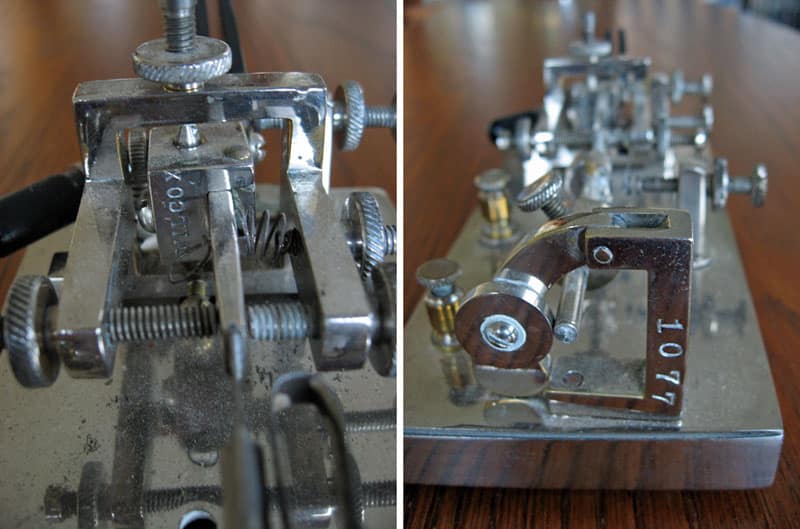
The maker’s name “Wilcox” is stamped on the pivot hinge, and the serial number 1077 is stamped on the damper frame. Photo: ZL1NZ
Wilcox keys in other collections
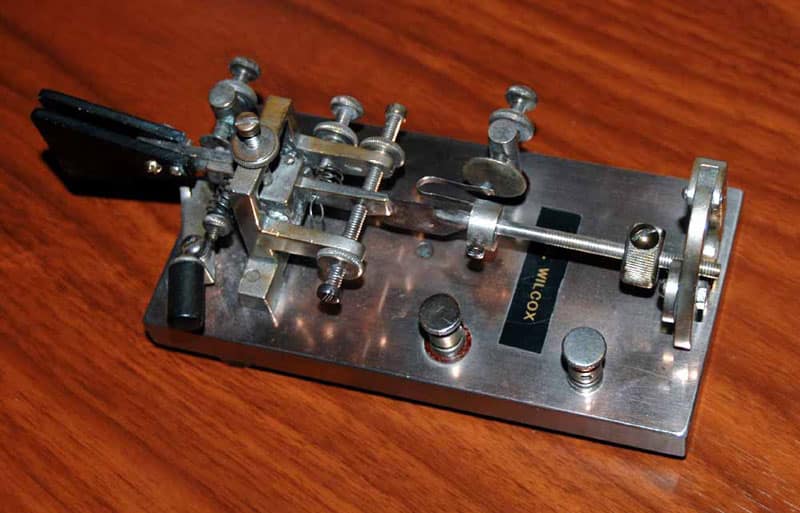
Here’s another Wilcox key, in the collection of W7IS. Look at the size of that dot contact! And is that a threaded pendulum?
“(Fred Wilcox) also had a small workshop under the house where he produced telegraph keys for his friends between 1920 and 1930.
“Fred had no specific machines for this production and many parts were built thanks to his manual skill. This means that there is not one product key the same as another, but each bug is different. Bugs have been found produced with iron or brass base, with various shapes. Rectangular, triangular, oval etc.
“He did not use plates on his keys, but he entered his name a bit in every part of the key without a precise rule, the only constant is the serial number, generally imprinted on the damper.
“The key shown below has a heavy chromed brass base, as is the frame, the pendulum and many other parts. The only frame adjustment screws are instead in chromed iron, while the rest in brass.
“The key works very well without moving from the table due to the important overall weight of the key. Note the thickness of the base which is one and a half times that of a normal Vibroplex.”
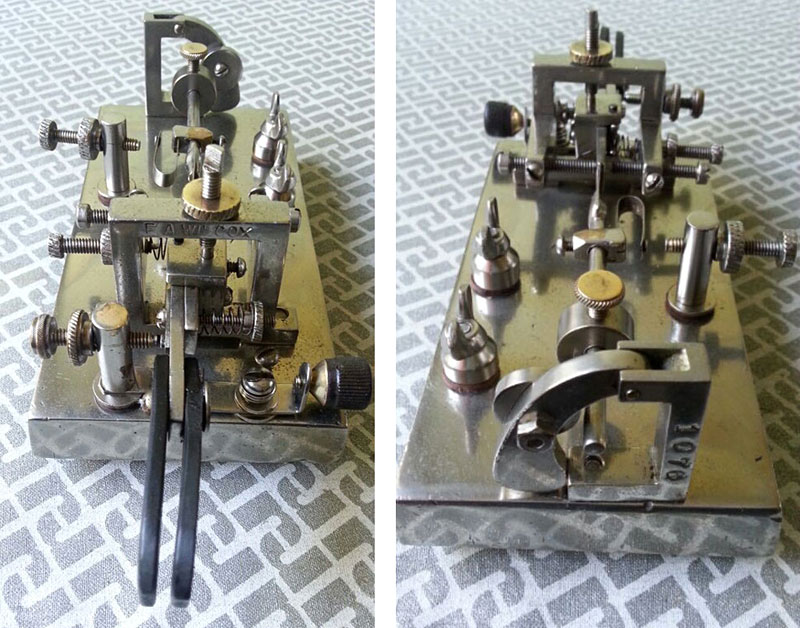
This key, in the collection of IZ0KRC, shows a serial number very close to mine.
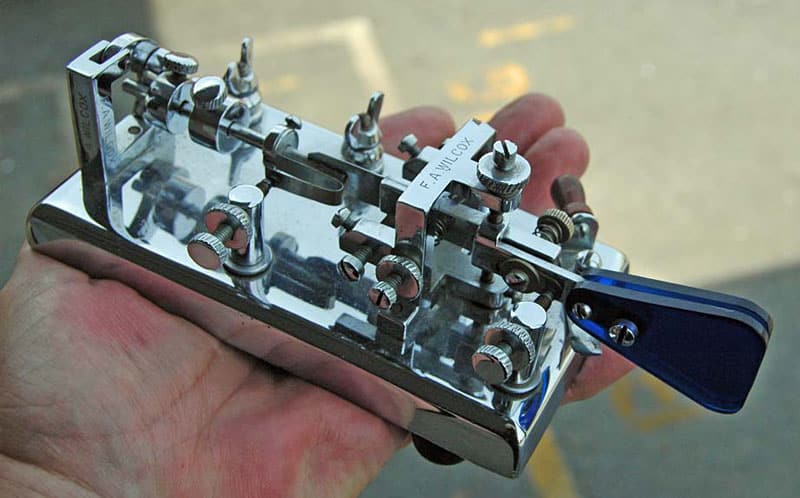
This lovely Wilcox bug, in the collection of KC4TP, appears to be a later model, with the vertical pivot positioned behind the main frame. The base is still thick, but with a softer appearance thanks to the beveled edges. On the bottom, one of the straps is stamped ‘1949’.
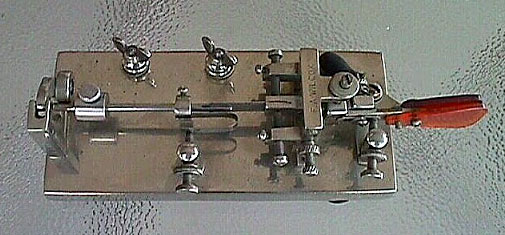
This Wilcox bug appeared on the Sparks Telegraph Key Review website, which is no longer online

Wilcox key on a wedge-shaped base, from the website telegraphkeys.com, which is no longer online




